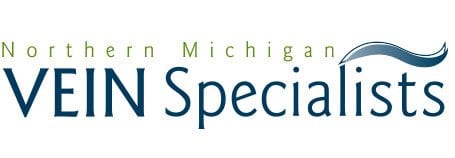Does A Phlebectomy Hurt?
There are several procedures that can be used to treat varicose veins. One is called an Ambulatory Phlebectomy. A phlebectomy is one procedure that may be recommended if you have large, ropy, and bulging veins. These veins can be unsightly as well as painful.
I am a previous patient, current employee at Northern Michigan Vein Specialists, and have personally underwent this procedure. If a phlebectomy is the recommended procedure to treat your varicose veins, it is performed in our office and typically takes about an hour and a half.
Does a phlebectomy hurt? Before I address this question, I feel it is important to understand the procedure.
The Procedure
The procedure begins with the physician tracing over your varicose veins with a marker while you stand. This is done because once you are lying down on the exam table the blood will be out of those veins making them difficult to visualize. While you lie comfortably on our table we will prep and drape your leg in a sterile manner. Then comes the numbing medication, which brings us to our question: Does the procedure hurt?
The physician uses a local anesthetic given through a series of small injections surrounding the varicose veins to be removed. Most patients are very tolerant and say the anesthetic feels like a bee sting, is very hot or cold, or just feels strange depending on the area of the leg requiring treatment. In addition some patients may become slightly jittery due to the medication, but that will pass quickly. Our staff may offer you a stress ball to squeeze or a cool washcloth for your forehead if needed for comfort during this portion of the procedure. No matter how you react to the anesthetic the sensations are short lived and worth it to get rid of those large, ropy veins. The medication is also very fast-acting and we are able to start removing the varicose veins as soon as the injections are complete. From here on out the procedure is virtually pain free.
To remove the veins a small puncture is made along the vein map drawn along the veins by the physician using an 18 gauge needle. Next a small crochet-type hook is inserted through the puncture, hooking the varicose vein which is then pulled out manually until the vein breaks off. Following the vein map, another puncture is made about the same distance down as the vein segment removed and the process is repeated. While the veins are being removed you can expect to feel some pressure and tugging. Occasionally patients will need some additional numbing medication which is rarely felt if a vein being pulled is particularly painful.
Once each segment of vein mapped has been removed your leg is washed and wrapped in three layers. The first is a gauze to catch any drops of blood or anesthetic fluid that may leak from the leg after treatment. The second is a layer of coban, a stretchy material that holds the gauze in place and provides some compression to the leg. The third and final layer is an ace wrap to provide additional compression and is easier to slide clothing over as the coban has a slight gripping effect. After the wraps are in place you will be able to relax while comfortably lying on our exam table for approximately ten minutes to allow time for any bleeding to stop.
After ten minutes have passed you are able to stand and walk freely around the room while we assess your leg for any further bleeding. Rarely bleeding does occur and we will ask that you lie down while we hold pressure on the area for approximately five minutes then we will change your wraps and you can be on your way. The three layer wrap will remain in place for twenty-four hours. After this time you may remove each of the three layers and shower then compression stockings will be worn daily for the following two weeks. No sutures are necessary and no dressings are required after the twenty four hours in the wrap. Patients may also resume nearly all of their daily activities without restriction.
Discharge instructions will be given both verbally and in writing after the procedure so that patients may refer back to them if needed. Patients will also receive the physician’s cell phone number in case of an emergency after hours or over the weekend. Before leaving the office a follow-up appt will be scheduled to assess the treated leg, in approximately three weeks post-operatively. A member of our friendly staff will also call the following business day to check up and make sure you are doing ok and address any concerns you may have.
At Northern Michigan Vein Specialists were ready and able to treat your varicose veins via our ambulatory phlebotomy or any of our other vein procedures. As Dr. Heeringa would say “any major surgery, is any surgery done on me”. Why should you feel any differently?” We understand that surgery can be scary and we are here to help in any way that we can. Please contact our office directly at (231) 936-2068, if you have any questions about our ambulatory phlebotomy procedure.
– Erin Dykgraaf, Certified Medical Assistant (CMA)
